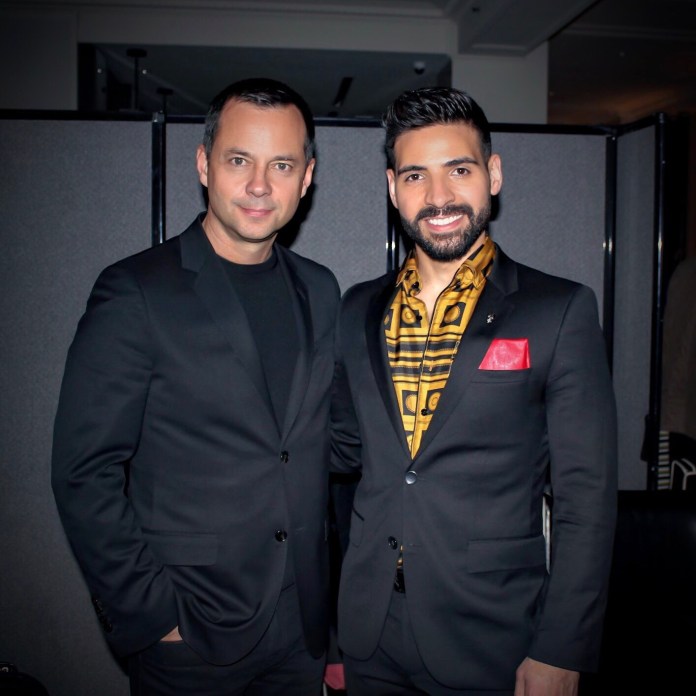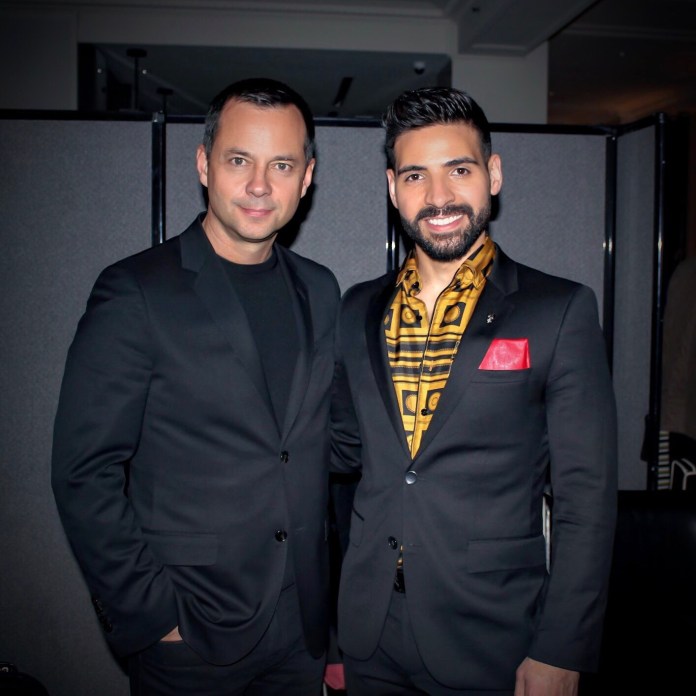 Sergio Velasquez-Terjesen, Contributor
Sergio Velasquez-Terjesen, Contributor
Following his keynote at the Retail & Luxury Goods Conference, Laurent Claquin shares his views on reinvention, connection, relevance, and sustainability luxury.
Blair Waldorf once said on Gossip Girl that “fashion is the most powerful art there is. It’s movement, design, and architecture all in one. It shows the world who we are and who we’d like to be.” So it should come as no surprise that the custodian of Kering Americas, with a portfolio encompassing some of the world’s most valuable luxury brands (including Gucci, Saint Laurent, Bottega Veneta, Balenciaga, Alexander McQueen, Brioni, Boucheron, among others) is a true art aficionado and connoisseur himself.
Laurent Claquin, President of Kering Americas, started his career as a consultant (hi HBS grads!) and then followed his heart to a role in the arts, working for Galerie Nationale du Jeu de Paume and Centre Pompidou. He arrived at Kering in 2004 and moved to New York City in 2011 to start the Americas division for the luxury group.
His love for the arts continues today. When he is not working on “the most powerful art there is”, Claquin can be found indulging in the work of visual artists at galleries and museums. If you really want to understand Claquin, you might wish to spend time at some of his favorites, including The New Museum of Contemporary Art and Dia:Chelsea in New York City; as well as the Chinati Foundation in Marfa, Texas; and of course, his former employer Centre Pompidou in Paris.
Claquin was a keynote speaker at the Retail & Luxury Goods Conference at Harvard Business School, which took place on February 23 and 24, 2019. The theme for the conference this year was “Reinventing Retail: Connecting with Today’s Consumer.” After the conference, I had the opportunity to sit down with Claquin and dig deeper into how Kering and luxury brands are thinking about reinvention, connection, relevance, and sustainability.
“Inclusivity is the new exclusivity. You can be luxury and still be inclusive.” – Laurent Claquin, on the rise of inclusive luxury
 Claquin believes that luxury brands are at a pivotal moment in their history, one where embracing diversity and being inclusive is essential to staying relevant. Kering brands have moved towards inclusivity by collaborating with graphic and street artists in some cases, and by creating a less intimidating store experience. For Kering, the key is to use the code and values of the brand as the root, and then embrace the cultural moment of today to connect with consumers in a way that is authentic and inviting. Reinventing the brand doesn’t mean losing the brand’s core; instead, it serves to keep brands relevant. “Every collection is a new chapter of the same book.”
Claquin believes that luxury brands are at a pivotal moment in their history, one where embracing diversity and being inclusive is essential to staying relevant. Kering brands have moved towards inclusivity by collaborating with graphic and street artists in some cases, and by creating a less intimidating store experience. For Kering, the key is to use the code and values of the brand as the root, and then embrace the cultural moment of today to connect with consumers in a way that is authentic and inviting. Reinventing the brand doesn’t mean losing the brand’s core; instead, it serves to keep brands relevant. “Every collection is a new chapter of the same book.”
Of the Kering brands, a prime example of social inclusion is Gucci, which has embraced gender fluidity. Gucci has even shifted store layouts, moving from gender-based to story-based merchandising. Gucci has shown it is not the role of a brand to dictate what is appropriate for a man, woman, or gender-queer person, but rather for brand stories and products to resonate with individuals. Claquin believes “we embrace all people, and we don’t make the choice for them. Ultimately, having a point of view strengthens the brand, even if not everyone agrees with it.”
“Brands need to have a specific point of view. Brands are like people. Social or political positions have to be authentic to the brand.” – Laurent Claquin, on brand evolution
We’ve seen the rise of social and political branding in recent years. Whether the Nike commercial featuring Colin Kaepernick or United Colors of Benetton’s #IBelong campaign, this type of brand storytelling is certainly risky for brands and can either galvanize loyalty or give rise to boycott campaigns from dissenters. Claquin believes that it is important for brands to take positions that align with the core beliefs of the brand. So these cannot be dictated at the group level, since these positions must be embedded in the brand’s DNA and be cohesive with the brand story.
Yves Saint Laurent, the man, created his brand as a rebellion against the traditional bourgeoisie, with an edgy point of view, and was one of the first couturiers to create full ready-to-wear collections that were accessible to a larger audience. What makes Saint Laurent, now a Kering brand, special is not the silhouettes that first appeared in the 1960s runways, but rather the sense of fringe fearlessness. “It’s about interpreting the value of the brand, bringing it forward to 2019, and keeping it relevant for today.” But he also warns, “that’s just the strategy, but execution is everything. And execution is really hard.”
Perhaps a greater challenge still is to transcend such iconic founders as Alexander McQueen and Yves Saint Laurent, both eponymous brands within the Kering portfolio. But Claquin believes it is precisely the strength of the founder that keeps the brands moving forward. “They left such a strong vocabulary for their brands. Such beautiful archives, values, stories, silhouettes, inspirations. […] We know who Alexander McQueen is, what he stood for and what the brand stands for, and it gives such strength to a new creative director who can take it over and build on it.”
“How do luxury brands expect to survive if one day we have no more cotton, no more leather, and no more wool? That is where the word ‘sustainability’ comes from.” – Laurent Claquin, on sustainability
Kering’s approach is remarkable, in that François-Henri Pinault, group Chairman & CEO, has been deeply convinced for years that sustainability is a necessity, which is why he placed this at the core of the Group’s strategy in 2005. This prompted Claquin to initiate the first corporate social responsibility (CSR) program at Kering. He also played an important role developing the group’s sustainability goals and the Kering Foundation. So it comes as no surprise that he feels strongly about the importance of sustainability for luxury brands. For him, being unsustainable fundamentally threatens the brands’ existence and future.
In 2018 Kering was ranked as the second most sustainable company in the world across all industries (and first in the Luxury, Apparel and Accessories category) in the Corporate Knights Global 100 Index, revealed at the World Economic Forum in Davos.
Kering takes a wholistic approach to sustainability, one that encompasses the environment, the community, and innovation. Sustainability at Kering rests on three pillars: Care, Collaborate, Create. Care is about the environment and reducing EP&L (environmental profit and loss) impact and achieving 100% material traceability. Collaborate is about society, empowering women, achieving gender equity, and preserving the cultures of craftmanship in the communities where Kering operates. Create is all about innovation. Claquin believes “incremental improvements, best practices, and business as usual will never achieve our goals. Innovation is about technology and alternative materials enabling us to transform.”
Bringing these pillars together, Kering launched an award for sustainable fashion in 2017 in partnership with the London College of Fashion, fostering young talent at the premier fashion school. A similar program launched in Greater China in 2018 in collaboration with Plug and Play, which awards start-ups with the potential to disrupt the industry and bring about positive social and environmental change.
“The retail experience of the future is not about digital, it’s about the human experience. It’s about learning, about excitement, about surprise, and about relationships.” – Laurent Claquin, on the future of luxury retail
Innovation is happening all around us, including the way we interact with brands both online and in store. But Claquin believes the store is still the best way to experience brands. “It has to be the primary destination, but in order to do that, the store has to be a destination.” The store is an opportunity to build relationships with customers. The brand story is a way for customers to learn about the brand and products, but also to build emotional connections with the brand. For Claquin, that relationship is key.
However, employee turnover rates in retail are quite high. To deliver consistent service, Claquin believes luxury companies need to invest in their people and show clear career progression, particularly for employees who begin their career at the store. Just as it is important for consumers to connect with the brand, it’s important for retail employees to feel a sense of belonging. “Remember that a brand is like a person. So that employee, who serves as a brand ambassador, has to feel a part of that person’s family.”
 Sergio Velasquez-Terjesen (MBA ’19) is a hodophile, epicure, logophile, and chemical engineer. He serves as Co-President of the Retail & Luxury Goods Club at Harvard Business School. He indulges in learning about cultures and people through gastronomy, visual arts, and language. His favorite things include sunny autumn days, long distance running, Champagne, and artisanal chocolate.
Sergio Velasquez-Terjesen (MBA ’19) is a hodophile, epicure, logophile, and chemical engineer. He serves as Co-President of the Retail & Luxury Goods Club at Harvard Business School. He indulges in learning about cultures and people through gastronomy, visual arts, and language. His favorite things include sunny autumn days, long distance running, Champagne, and artisanal chocolate.


